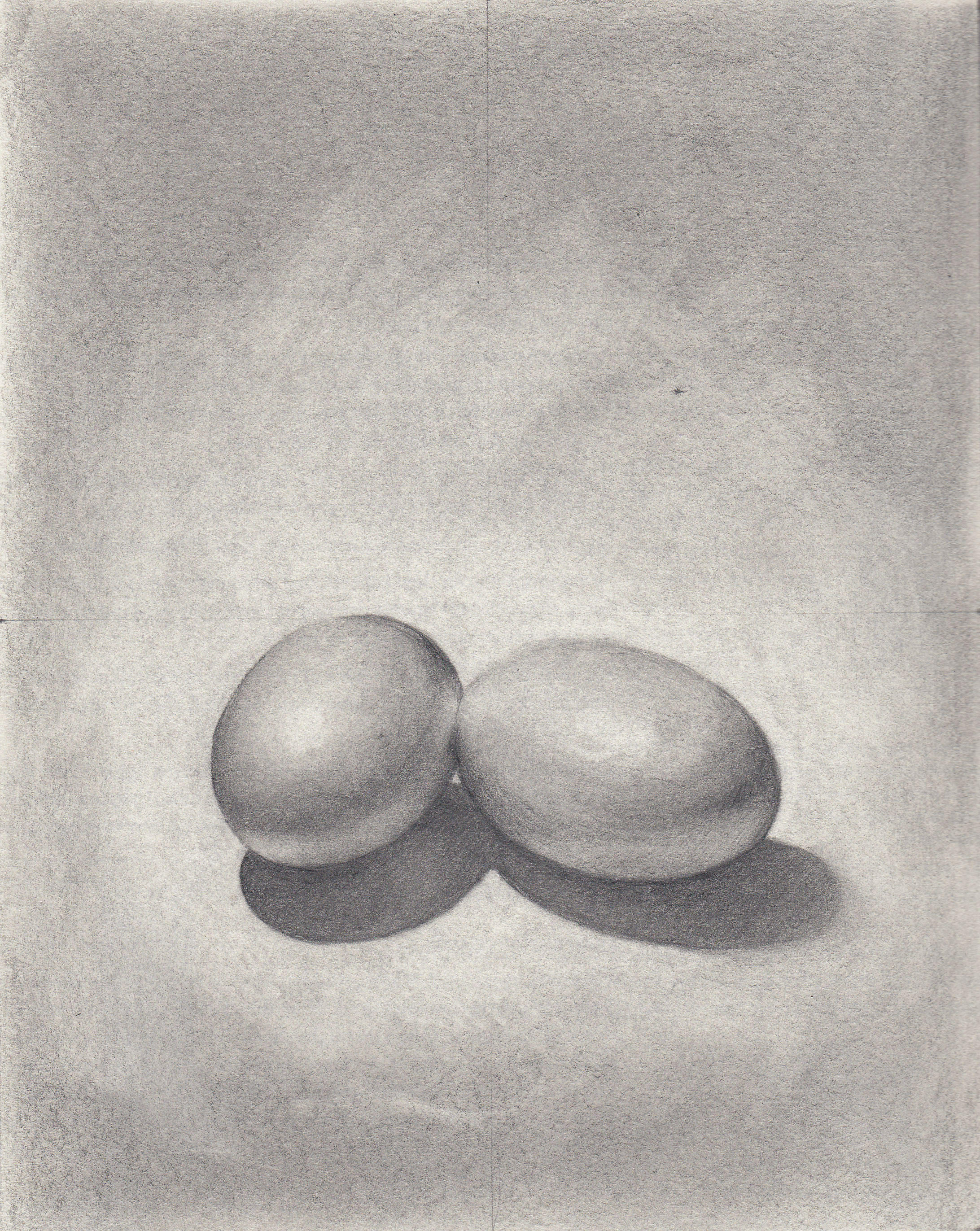After the skill of perceiving edges, spaces and relationships comes the skill of seeing shadows, of making things appear three-dimensional.
Edwards calls this “light logic”, which isn’t a term I’ve heard anywhere else, but it makes sense – light and shadow obey very simple rules and can be reasoned out logically if you have the knack.

Drawing an Egg Lighted from Above
“The perception of edges (line) leads to the perception of shapes (negative spaces and positive shapes), drawn in correct proportion and perspective (sighting). These skills lead to the perception of values (light logic), which leads to the perception of colours as values, which leads to painting.
Edwards has us repeat the trick of turning the picture upside down to help break down areas of light and dark into abstract shapes to be duplicated.

Charlie Chaplin in Light and Shadow
The high contrast portrait of Charlie Chaplin shows us the was that the brain is able to extrapolate from incomplete data. I was thinking about pareidolia at this point – the psychological phenomenon in which a person can see a familiar pattern (eg: faces) in random patterns – but I don’t know if this would apply to seeing a face in a heavily distorted image of a face.
No matter how your style evolves, however, you will always be using edges, spaces, relationships, and (usually) lights and shadows, and you will depict the thing itself (the Gestalt) in your own way.
Edwards touches, briefly, accidentally, on what I would consider to be the most fundamental skill in drawing – that of knowing when to stop. They joke about artists needing someone to stand behind them with a sledgehammer and, on reflection, I can see the merit in that.

Exercise 33
Copying a Full-Face Portrait (source)
Exercise 33
Copying a Full-Face Portrait
Exercise 33
Copying a Full-Face Portrait (comparison)
The mark of a trained artist is not the ability to stop in time, apparently, but the ability to crosshatch. Most of us start out with scribbling, but once you push through that, your Hatching technique is as much a signature as, well, your signature. Edwards suggests practicing crosshatching various geometric shapes, which is definitely something I could add to my warmups.
Edwards mentions that children begin drawing faces in three-quarter view around the age of ten, when they try to capture not just the likeness of the subject, but also the character. This creates a conflict with the symbol system they’re used to using, as the rotation of the face forces them to deal with asymmetry and the foreshortening of features on the far side of the face. At this point the only thing to do is to draw what you see, not what you want think you see.
Edwards points out that the space between the inner corner of the near eye and the bridge of the nose is a particularly important – and difficult – proportion, and that getting it wrong can throw off the whole drawing. Likewise, the placement of the ear has changed since the profile drawing, forward towards the face – now, the distance between the eye level and chin is equivalent to the distance between the inside corner of the eye and the back of the ear.
Another common pitfall is to widen the far side of the face and then, realising the face is too wide, to narrow the near side, resulting in a portrait closer to a frontal drawing than a three-quarter view.

Exercise 34
Drawing a Self-Portrait in Light and Shadow